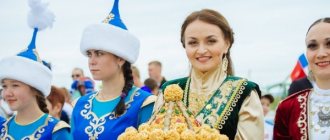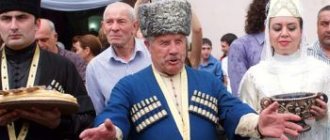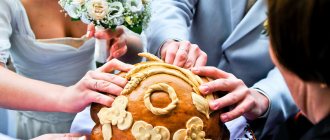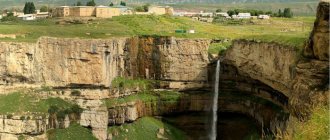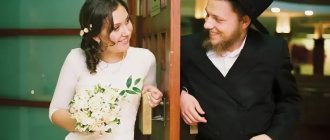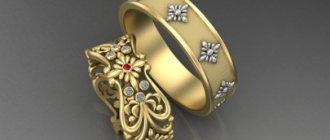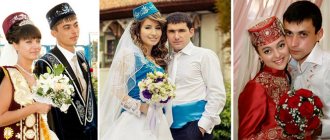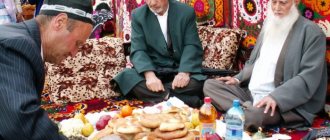Story
Archaeologists believe that the first people appeared on Udmurt soil about 10 thousand years ago. At that time, Udmurtia was part of the tundra zone, which determined the agricultural way of life. The population hunted and fished. The land here was rich, so it was possible to catch mammoths and harvest wool for clothing for future use. A number of historians put forward the assumption that tribal tribes honored matriarchy. Gradually the climate changed towards a warmer one, the territory became even more favorable for life, which led to the construction of cities and attracted the attention of neighboring tribes. The gradually strengthened Kazan Khanate decided to take control of the territory of Udmurtia, which it successfully managed to do. Later, the Tatar-Mongols came here, but over time, the unification of lands with the Russian population began, which ousted the Mongols and the Kazan Khanate, annexing Udmurtia. The Udmurts were able to get a lot of benefits from the Russian people: establish agriculture using new tools, introduce a multi-field farming scheme, learn to breed new breeds of livestock and grow new crops. For the first time, the population had a Russian stove in their homes, and weaving developed. According to many historians, it was thanks to the Russians that the Udmurt people created their alphabet and writing. The development of industry in Udmurtia began in the 18th century. Here they began to produce iron and produce firearms. In the next two centuries, Udmurtia had to go through difficult times, including tireless work due to the outbreak of World War II. Now Udmurtia has the status of a presidential republic.
Wedding ceremony of the Xuan of the Kukmor Udmurts
The wedding ceremony of the suan of the Kukmor Udmurts living in the Republic of Tatarstan is a multi-stage event that lasts about a year.
Matchmaking. The groom's relative az vetli ('the one in front') goes to woo the bride. After much persuasion, the bride's parents agree to the marriage and ask their daughter's opinion. If the bride agrees, she gives the matchmaker a small gift.
Collusion. Takes place before Peter's Day. The groom's father and relatives go to the bride's relatives to negotiate the bride price. Having reached an agreement, they organize a small feast, during which they sing songs based on the guest tune.
The first is the summer part of the wedding . The wedding ranks at the wedding are: svatun az vetli, senior groom bydzym Cossack, young friends and relatives of the groom Cossack pios “Cossack guys” and Cossack nylyos “Cossack girls”.
Before going to pick up the bride, the groom's relatives pray in front of the home kuala (a religious building in the courtyard of the house), and also commemorate the ancestors of the house. To do this, pieces of bread are placed in a trough placed in front of the stove and kumyshka, the national alcoholic drink of the Udmurts, is poured into it. Having arrived in the bride's village, they first go to the matchmaker's house, where the train participants are treated only to porridge, then they go to the bride. In her house there is a bowl of oil on the table. The matchmaker puts butter on pieces of bread and distributes it to everyone with good wishes for the bride. The feast begins, at which guest songs are sung. When the last dish is served - porridge with meat, everyone stands up and prays. Then the guests go to the houses of the bride's relatives and neighbors, where they are treated to food.
In the evening, the wedding party returns to the bride's house. The bride, covered with a shawl, is led out to the guests. On her behalf, women of the bride's family distribute gifts to residents. Then the bride is taken to the women's half of the hut. The bride's brothers come up to her and sing songs to her on their knees “as a sign of gratitude.” The guests are feasting at the table. At the end of the feast, the bride is led around the yard, taken into the kuala, walked around the cart with horses three times, and then put on the cart. Having driven a little away from the bride's house, they draw a line on the ground with an iron knife, thereby separating the residents from the relatives remaining in the bride's house.
At the groom's house, a canvas is placed under the bride's feet. Travelers and the groom's relatives who meet the young couple pray with bread and butter. The mother-in-law lifts the canvas on which the bride is standing and picks out the earth from under it or draws a cross on the ground so that the sorcerer does not spoil the bride. The bride wears an ashyan wedding headdress, trimmed with fringe on top, which completely covers the bride's face. A syulyk scarf is placed over the ashyan. After this, the bride is taken to the cage.
One of the women dresses up as a young woman and enters the house three times, dancing. They ask her “Whose wedding is this?” and she names the groom’s name. Then the neighbors are invited to the wedding feast. They pray before meals. The bride is taken out of the cage and all the guests, starting with the groom's father, are surrounded with vodka, kneeling down. After the feast, the bride and groom go to the cage, and the young people make the bed and pray on behalf of the young people, using the most obscene expressions.
After 1–6 months, the ritual of removing the scarf, syulyk koskon, is performed, to which a musician (violinist, guslar or accordion player) is called. The bride prepares a special dish: noodles and small dumplings with a variety of fillings (flour, salt, pepper, peas, hemp seeds, etc.). All the relatives gather. A young woman in ashyan stands between the stove and the wall. The future boyfriend, to the music, takes off her wedding ashyan, puts it on himself and dances, approaching the manager of the feast, Tor Pukis, and his wife three times for refreshments. Then he puts the wedding ashyan on the bride again, takes another - female - ashyan from her, the fringe of which covers only the forehead, and takes it home. The next day, the friend returns it to the young woman.
After the autumn holiday, the icons of the Kazan Mother of God call guests for dinner, where they commemorate their ancestors. At the end of dinner, the bride is taken home to her parents, where she remains until the winter wedding. There, the bride takes off her ashyan and wears a headscarf, but no longer in a takya (girl's cap). Until her second wedding, she continues to live a girl's life, enjoying complete freedom.
The second - main - wedding is held on Maslenitsa . First, the xuan wedding feast takes place at the bride's house, which lasts four days. The guests, as during the first wedding, first go to the matchmaker, and only then go to the bride’s house. A fire is made in the yard, and it is lit from the fire, which the elder friend, the Bydzym Cossack, buys from the neighbors, giving them a small coin for the fire. The bride's relatives bring butter and bread to the yard, where everyone prays together, facing the south. Then they go into the house and after prayer they treat themselves to porridge and kumyshka. At the feast, the matchmaker begins to sing the special chant xuan syam first, and everyone picks it up. The young woman is not present at the feast, but sits with the neighbors. A friend with bread and butter, accompanied by friends, goes to her. All the way they sing the chant xuan xiam. Having gone to the neighbors, the groom and his friends invite the bride to a feast, singing the song “Is our flower here? There is no fun without a flower." Returning home, the bride treats her father-in-law and everyone else with kumysh, kneeling down.
On the second day the feast continues. On the third day, the youngest friend of the pokchi Cossack takes the kubo modos spinning wheel and with all the guests goes around the houses of relatives, where young girls or owners tie ribbons to the spinning wheel. At night, pranks are played in the bride’s house: old bast shoes are attached to the guests’ feet or the shirts of people sleeping nearby are tied up.
On the fourth day they feast again with songs. After dinner, the guests prepare to leave: they enter the house three times, singing and taking out the feather bed, then tie the youngest friend to a post and force him to drink kumyshki. He asks for andan stal (= tavern vodka) with a song. Again they enter the house three times and take the young girl out, then lead her around the sleigh three times. Having driven off, they draw a line in the snow with a knife.
At the groom's house, the feast continues, only guest songs are sung. The bride distributes gifts. The next day the bride goes to the spring to bring water. On the same day, they visit the houses of relatives and neighbors, and in the evening they gather at the groom’s house.
Currently, the Udmurts celebrate their wedding differently. The bride is “kidnapped” by agreeing on this in advance. She is taken from her parents' house and taken to her groom, in whose house the young people gather. The bride is locked in a kenas cage, and they themselves organize a Yumshan celebration with songs and dances. That same evening, the father and mother of the bride are brought to the groom’s house and, if the girl agrees to the marriage, the parents agree on a future wedding. The next morning, the tukmas siyon ceremony is held. The bride cooks and cuts noodles for soup with goose or duck meat, makes small Chumer dumplings with a variety of fillings: cereal, pepper, peas, etc. If she comes across a Chumer with butter, she will be happy in her family life.
The time of the wedding is no longer so strictly regulated. However, many basic elements of the ritual, including its musical arrangement, are preserved. The wedding feast is still held in the bride's home and is considered the main stage of the wedding. Here they sing songs to a special chant of Xuan Xiam. The second day is celebrated in the groom's house, where songs based on the guest multifunctional chant duon syam, as well as other songs, are played.
Character
For many years, Udmurtia was an autonomous region, so its residents felt independent. The main economy has always been connected with the forest, which, according to the Udmurts themselves, influenced their character. Many people think of the Udmurts as calm, even slightly phlegmatic people. Many people worry about the opinions of others, but never get into arguments. Since ancient times, Udmurts have considered starting hostility to be a grave sin. Often people appear closed, shy and reserved. In relation to each other, on the contrary, they are open, sociable, and emotional.
Appearance
Most Udmurts are red-haired. The cheeks are naturally sunken, and freckles can often be seen on the faces. Professor Nikolai Nikolsky noted that most Udmurts have strong white teeth, a sharp chin, a yellowish complexion, and narrow eyes.
Cloth
The main materials for the manufacture of national clothing of Udmurtia are:
- canvas
- cloth
- sheepskin.
Women wore a tunic-like canvas shirt, and over it they put on a white robe, which was belted. If it was necessary to dress warmer, they wore a camisole. For legs - pants. Clothes were usually colored, and on a holiday people wore white. Shoes were felt boots or bast shoes. Embroidery made it possible to decorate clothes with ornaments at your own discretion; women loved to embroider outfits with beads and decorate themselves with beads, and in the south, coins were especially popular. Married women were required to wear a bandage on their forehead. The main headdress was a birch bark cap. It was also decorated with coins, less often with shells. Men wore a tunic-like shirt with a slanted collar. They belted it, put trousers on their feet, put a felted hat on their head, and walked in bast shoes or boots. Fur coats have long been common, protecting from the cold and allowing one to show one’s status. Now ethnic fashion has not lost its former popularity, having mixed with modern European style.
Traditions and customs of the Udmurt people
The main traditions and customs of the Udmurt people are various holidays, or rather the process of celebration itself.
The reason for the Tolsur holiday is the entire harvest collected by the people. On this day, people clean their houses, set a festive table, put beer and kumyshki on it, as the national moonshine is called, and call a full house of guests. On this day, it is customary to ward off evil spirits by dressing in various costumes, playing blind man's buff, singing and dancing.
Maslenitsa in Udmurtia is called the Howl of Holes. Pancakes are fried in all houses, relatives gather, and even weddings are held. The howl of holes is a game day, children ride horses, go down snow slides. On this day, girls tell fortunes by tow. On the last day of the holiday, Udmurts dress up in various costumes and perform a bear dance.
The Akayashka holiday begins with the expulsion of Shaitan so that he does not spoil the holiday for people, as well as the protection of the house from evil spirits. This holiday lasts 3 days, after which Easter comes. People prepare food, brew beer, invite guests. It is customary for the Udmurts to slaughter a bird, usually a duck, for sacrifice on this day. And on the last day, women lash sheep to ensure health and prosperity.
Source
Housing
A traditional Udmurt house has similar features to a Finno-Ugric dwelling. Locals call it "koda". Later, the Udmurts began to live in huts, which included a vestibule. A gur, an adobe oven, was always placed inside the hut. Next to the stove there was a red corner where a table and chairs were placed. The most beautiful was intended for the guest of honor or the head of the family. Benches were placed along the walls and shelves called zhazhi were placed above them. They hid the dishes in the closet and slept on bunks. Now many modern houses are being built in Udmurtia, but the population strives to preserve traditional decoration. In almost every house you can find carpets on the walls, a lot of towels (chushkon-turban), which decorate benches, chests, and window sills. In the old fashioned way, curtains made of chintz and embroidered with national patterns are hung on the windows.
Culture
Udmurt music is divided into song and instrumental styles. In turn, song can be ritual, non-ritual and ritual. The Udmurt people dedicated songs to literally every phenomenon, for example, hunting, beekeeping, weddings, agriculture, and the change of seasons. People composed songs dedicated to hard labor and recruitment. The influence of the Scythians, Indo-Iranians, Byzantines, Finns and Russians can be traced. The love of music gradually led to its popularization in the field of education - children from school studied notes, sang in choirs and participated in balls. In the mid-19th century, the population began to become interested in the works of Pushkin, Gogol and other Russian writers. Theater appeared in Udmurtia thanks to ancient religious cults that professed syncretism - an extremely difficult to understand religion, full of abstractionism. Theatrical scenes among the ancient Udmurts rather served as rituals. Performances were staged right in the fields, houses or clearings. The scenes were not just rituals, but sought to show the plot and its development. Many stage productions talked about matriarchy and patriarchy, subsequently giving way to pure acting. The unusual idea of theater found a response in the hearts of many people, so theater groups went on tour throughout the country. At the beginning of the 20th century, theaters in Udmurtia began staging plays based on plays by famous Russian writers. Udmurt folk poetry became known in Russia thanks to Vereshchagin, Pervukhin, Gavrilov and others. Many Udmurt poets talked about everyday life, life, difficulties, and could be of a social-lyrical, heroic, or epic nature. A lot of literature is devoted to mythology.
Folklore
The Udmurt people have always had a developed folklore, serving as a source of wisdom and self-knowledge. Folklore was not divided into genres; it included material, religious and ethical culture. Many folklore works were dedicated to rituals and magic, choreography, and music. Through folklore, people turned to nature, cursed, took oaths, and congratulated. Folklore told about harvesting, crossing, treatment, even collecting water. A certain shamanism, the basis of which was healing words, spread among the Udmurts. Belief in conspiracies literally permeated people's lives. There were conspiracies against fever, wounds, and the evil eye. The most important were considered to be economic conspiracies that would bring benefit and prosperity to the home. Folklore contains many melodies that were dedicated to seeing off ice, round dances, the arrival of the first spring holiday, and the arrival of guests. As a result, folklore, whatever it was, told about all aspects of life. It is not for nothing that the Udmurts themselves say that it was composed according to the principle “I will tell and sing about what I see.” Many folklore works have become epics, retellings, fairy tales and short stories. It is interesting that the epic and retelling were taken at face value. Folklore also had an instructive meaning. He talked about taboos, cited sayings, proverbs, and taught us about signs.
Presentation “Udmurt folk holidays”
The purpose of this presentation is to introduce children to the culture of the Udmurt people through familiarization with national holidays and rituals
Viewing the contents of the document “Presentation “Udmurt Folk Holidays””
Udmurt folk holidays
It is celebrated in the same way as everywhere else, on the night of January 1st.
Howl of holes (Maslenitsa)
Yo Keyan (Seeing Off Ice)
The deliverance of the settlement from evil spirits was expressed in a special ritual game: young people threw a burning splinter to each other, which symbolized demons. The ceremony was carried out deliberately noisily: they knocked metal objects against each other, slammed doors, and laughed loudly. The ritual was completed by beating or burning an object symbolically representing an evil spirit.
This holiday marks the end of the yarn harvesting cycle, which occurred at the beginning of spring. In honor of this event, miscon shorts celebrations were organized. The symbol of the holiday was the spinning wheels that women carried with them.
The ritual of the beginning of spring field work.
This holiday is associated with the cult of livestock. All ritual actions performed on him were aimed at preserving the livestock from diseases and predators, as well as increasing the fertility of animals.
Quarsur (Herb Festival)
In the countryside, from that day on, the nyrysete turnan (first mowing) began amicably. It was believed that the best hay was that which was cut just before the native meadow grasses bloomed. According to popular belief, on Peter's Day, red summer begins and songbirds stop singing. On this day, services are held in church parishes in the name of the apostles Peter and Paul.
On these days, the Udmurts performed rituals designed to ensure rich
harvest. The holiday was held in a flowering meadow. Young Udmurts played and danced in circles, competing in strength and speed.
“Vyl ӝuk” is translated from Udmurt as “porridge of the first harvest.”
Traditions
Holidays
Gerber is considered the most important national holiday of Udmurtia. It has strong historical roots, although it was officially approved only in 1992. The beauty of the holiday is that everyone can come to it. Gerber was always timed to coincide with the end of arable work. Mandatory during the holiday were community prayers, sacrifices, and a walk around the field. A bull was used as a sacrifice, which had to be slaughtered next to a grain field. The meat obtained in this way was added to porridge with oats, barley and buckwheat. At the end of the meal, the people began to walk, play games, dance and dance in circles. The favorite competition of people on Gerber was horse racing. This way they could not only show themselves, but also look at others: young men looked out for girls to find a suitable bride. For the holiday, they performed a rather funny ritual - syaltym. They chose a girl, if she could pay off with wine or a beautiful towel, she was released. And if not, they were thrown into the river.
Wedding
Marriages traditionally take place in the winter before the onset of Maslenitsa, and in the fall before the start of Philippi Lent. This approach is explained by the way of life that has developed since ancient times: people finished field work and there was time to prepare for the wedding. Weddings were prohibited in the summer. Sunday, Friday and Wednesday were undesirable for the celebration. Due to the complexity of preparation, this stage can take from 2 weeks to several months. Previously, many parents did not want to marry their daughters early. The girl in the family at a young age already began to help around the house, and the older she got, the more household chores she was entrusted with. It was not uncommon for a girl to get married who was 3–4 years older than her husband. The parents carefully selected a bride for their son. For this purpose, a woman (demchi) was chosen, whose duty was to search for suitable candidates. The duties of the matchmaker included drawing up characteristics of the parents and determining their income. The Udmurts valued their wives' complaisance, hard work, and the ability to clean up the house well and quickly. When the groom's relatives went to pick up the bride, the demchi was the first to speak to her parents. The matchmaker spoke in verse and used colorful epithets. If the bride's parents refused, the guests had to leave the mittens and return, using them as an excuse. If they agreed, the bride went out to the guests and placed the samovar on the table. Next came tea drinking. During the conversation, the bride price, the time of the beginning of the celebration, and the dowry were discussed. The preparation for the feast is interesting. The meal was held in the bride's house, which had to be cleaned, all the beds made, decorative towels hung, snacks and baked goods placed on the table. Relatives rarely sat down at the table themselves, serving guests. Such a feast is called xuan. Guests there had to eat flatbread. If a feast was held in the groom's house, then the arriving relatives and guests were obliged to learn songs in order to perform them with everyone. The bride and groom did not sing, but only listened. Such a feast is called yarashon. On Yarashon, the owners of the house should give the newlyweds a barrel of honey, and the newlyweds treated everyone present with honey.
After the wedding, it is important to observe several rituals:
- After yarashon, the bride's parents need to visit the newlyweds.
- For the first time after the wedding, a wife can only come to her parents accompanied by her husband and his mother.
- The newlyweds take the dowry in the first autumn.
Udmurt wedding
Wedding traditions and customs at an Udmurt wedding
The richness of the cultural heritage of the Udmurts is clearly manifested in their wedding customs and traditions.
One of the main national aspects is the time of the wedding celebration. It is customary to celebrate weddings here either in the winter (from Epiphany to Maslenitsa), or in the autumn - from the Intercession to the Fast of Philip. This time was not chosen by the ancestors by chance. During this time there was no field work, so there was more than enough time to organize the wedding celebration. If the wedding took place after the Intercession, the belief promised the young spouses a rich and joyful family life. But even during this period it was impossible to legally marry on Wednesday, Friday and Sunday. Similar bans on the days of the week can be found in wedding traditions of other nations. As for summer, at this time of year all Udmurts must work in the fields.
An original feature of the Udmurt wedding ceremony is the long period of time between the first and final stages. Sometimes the wedding marathon drags on for several months. The reason lies in the fact that there are quite a lot of stages, and preparation for each of them takes weeks and even months.
Here are the main stages of an Udmurt wedding:
- nyl kuran (matchmaking);
- yarashon (celebration in the house of the newlywed);
- Xuan (celebration in the bride's house) and the young woman moving to her husband.
Matchmaking
Since ancient times, the issue of marriage of Udmurt children was decided by their parents or older relatives. Parents began choosing a life partner for their son after the boy’s seventeenth birthday. Early marriages were largely due to domestic problems - the boy’s parents wanted to get another mistress into the house. On the other hand, families with girls tried to keep them at home longer. Therefore, very often Udmurt wives are older than their husbands.
Relatives actively helped the father and mother of the young Udmurt choose a future wife. Important recommendations in this matter were given by a specialist (demchi). Most often, such an expert wore a skirt. Having found a suitable candidate for the role of the bride in the area, the demchi made inquiries about her and passed them on to the interested party. The main criteria when choosing a future wife were: hard work, affectionate and flexible character, good health, love of cleanliness and order. If the guy’s family liked the chosen girl, then they began to prepare for matchmaking.
The delegation of Udmurt matchmakers consisted of the father (if he is not there, then the mother) of the guy, demchi and someone from close relatives. Mandatory rule: only one parent should go to matchmaking; two parents are not allowed. Traditionally, matchmakers brought snuff with them for the father of the bride. If a man liked tobacco, he agreed to marry his daughter. But everything did not happen so quickly.
Arriving at the bride’s house, the demchi began a conversation about the purpose of the visit in an allegorical form. It rarely happened that matchmakers left with a positive answer for the first time. If they were told “no,” the wedding delegation left the mittens at the girl’s house and then returned, supposedly to get them, but with the same question.
When the parents finally said “yes,” the betrothed girl put the samovar on the table, and everyone moved on to solving organizational issues: bride price, wedding date, dowry. In the past, the Udmurt bride did not have the right to go against her parents and refuse the wedding, even if the groom was not nice. Today she can say no, but this happens extremely rarely. Usually daughters do not go against the will of their parents, who wish only good things for their children.
After successful matchmaking, the collusion stage begins. The bride, groom, and their closest relatives take part in it. They agree on all the important aspects of the wedding ceremony. After this, the mother of the bride puts butter and a loaf of bread on the table. The guy's father puts silver coins in the oil. These simple manipulations are filled with fateful meaning - after they were carried out, the Udmurt girl was considered betrothed and could already live in the groom’s house. The second option is to stay with your parents until the wedding.
Preparations for an Udmurt wedding
After all organizational issues have been resolved, Udmurt families begin preparations for the wedding ceremony. The father of the groom and the father of the bride pay visits to relatives and invite them to the celebration, which in Udmurtia is considered a sign of great respect. Preparation for a wedding consists of preparing treats, bride price and dowry, the size of which was discussed in advance.
Feast at the bride's house (xuan)
If, after the conspiracy, the Udmurt bride remained with her parents, then the wedding procession from the groom’s house followed to the newlywed’s house. Relatives invited to the wedding came to see off the future spouse. Everyone wished him good luck and gave him good advice. Guests from the male side were called poezzhans. From among them, the groom's father chose a woman and a man, whom he appointed as elders. Demchi were always invited to the wedding feast.
In the house, the girls meticulously prepared for receiving guests: they laid hand-woven blankets on the beds, hung beautiful towels over the windows and mirrors - they decorated the house only with the best. They diligently prepared a variety of dishes and placed snacks and bread on the table. The bride's relatives came to the house long before the wedding procession arrived. Everyone helped the owners treat the guests.
The newlywed's retinue was greeted at the gates of the house and offered to taste egg cakes with strong drinks. One flatbread had to be eaten, otherwise they would not be allowed into the house. When everyone was assembled, a lavish feast began, the guests were seated and the banquet manager was in charge. The cheerful guests sang Udmurt wedding songs, told old stories, and made national toasts. With the help of songs, the guy's relatives met the bride. At the end of the xuan, all participants in the ritual exchanged gifts.
Feast at the groom's house (yarashon)
Yarashon differs from suan, first of all, in that the wedding procession went from the bride’s house to the groom’s house, where the feast took place. Then the residents paid visits to the relatives of the newlywed. In every home they were treated to national dishes and taught to sing songs. The newlyweds also went home with the guests, but did not sing.
According to tradition, during the Yarashon, the owners of the house were asked for a barrel of honey or kumyshka - Udmurt vodka. These treats were tasted with a spoon, and the empty barrel was sold to one of the guests. On the last day of the ceremony, the guests prepared outfits, came up with all sorts of images, and staged a performance. Women often dressed in men's clothes, everything was interesting and fun.
The yarashon ended with notes of sadness; the guests felt sorry for the newlywed, who would now live in someone else’s house. With their sympathy they intended to make the Udmurt bride cry. It was believed that the more tears a girl sheds before marriage, the less she will have to cry throughout her family life. After this sad ritual, the wedding ceremony was considered over.
Moving to the groom's house
In order for an Udmurt girl to be able to leave her parents’ house, her fiancé had to pay the bride price. Relatives were waiting for the bride in the yard, and when she came down, they led the girl around the horse three times. The mother-in-law led her daughter-in-law into the house and sat her on the pillow. Then she unbraided her braid, and instead did a wreath hairstyle. Then the mother of the newlywed put a turban on the head of the future mistress, which was a symbol of a married woman. After these rituals, the young couple went to their bedroom.
On the first morning after an Udmurt wedding, it is customary to look at the dowry of the young wife. They open the chest brought by the girl and hang all its contents in the yard. After this, the young hostess treated the guests to her dishes - this is how she showed cordiality and hospitality. After tasting the food, everyone went to the river, where the young wife threw a silver coin into the water and filled a bucket of water. Already in the house, the girl treated the guests to water, which she brought from the river.
Post-wedding rituals
Udmurts attach great importance to post-wedding rituals. Here are the main ones:
- seven days after yarashon, the bride’s parents and relatives come to visit the newlyweds;
- for the first time after marriage, a young Udmurt woman can go to visit her parents only with her husband and his mother;
- the groom's relatives invite the young family to visit so that the girl gets to know all the relatives;
- Immediately after the wedding, the newlyweds and their husband's relatives go to pick up the pets promised as a dowry.
After this, all wedding ceremonies are considered completed.
Video: marriage in Udmurt style
The creation of a new family is one of the most important holidays among all nations, which is accompanied by rites and rituals. The Udmurt wedding ceremony, thanks to ancient traditions, looks very beautiful and enchanting. If you are interested in the culture of this people, you should definitely attend an Udmurt wedding. You will discover a lot of new positive experiences. In the meantime, you can watch a video from a traditional Udmurt wedding, appreciate all its beauty, and feel the range of feelings experienced by relatives and newlyweds.
Life
Agriculture and animal husbandry became the main occupations for the ancient Udmurts. Fertile soils were suitable for growing a variety of crops; people could afford to constantly eat berries and vegetables. Men were engaged in hunting, fishing, and beekeeping. The proximity to the forest made it possible to quickly get hold of the animal and feed the family to the full. The Udmurts early managed to master timber harvesting, woodworking, weaving, knitting, and embroidery. Clothes were made at home and some were sold. In the 18th century, industrial development began. The population switched to production, leaving traditional crafts. To this day, part of the population of Udmurtia is employed in the manufacturing sector, but some continue the work of their ancestors.
Religion
The main religion of Udmurtia is Orthodoxy. Some residents of the republic remain committed to paganism. One of the main gods of the Udmurt pagans is Inmar, personifying the sky. Since ancient times, the Udmurts were inclined to deify weather and fertility, because all this played an important role in their life. In addition to gods, Udmurt mythology includes many beliefs related to spirits. Pagans believe that almost everything has spirits: the forest, the forest, the wind, the barn, the field. Faith in brownies remains. Inmar's opponent is Keremet, considered an evil spirit. The prayer must be read in front of the kuala - a cult pedestal that is located in the courtyard. The spirit that patronizes the entire family lives in the pedestal. The spirit must be presented with bread, poultry, pancakes, burning the gifts on fire. All gods should be honored by praying regularly during the festival. The priests read prayers, asking for good weather, harvest, and prosperity for all village residents. For every religious holiday, porridge was prepared using various grains that were collected from all residents. Broth, melted butter, and chicken eggs were added to the porridge. They presented the porridge to the gods, then ate it themselves. Believers in paganism are required to visit the sacred grove, where they also need to pray. The sacred grove was intended exclusively for prayer - it was forbidden to graze cattle, pick berries, or cut down trees. Believing in the lower gods, the Udmurts bury gifts under the roots of the sacred tree. At its top they placed benefits for the upper gods. Birds and animals are sacrificed to them. Paganism clearly shares the position of rituals:
- In the spring and summer it was supposed to ask for a blessing on the harvest.
- In autumn-winter - give thanks and ask for prosperity for the coming year.
- During the New Year celebration, one must again ask for blessings on the harvest.
All residents of Udmurtia participate in folk festivities associated with ancient religious rituals. For example, Maslenitsa, Easter, called Akashka, and Gyron, associated with the end of arable work, are always popular. Children are told about Tol Babai - Father Frost, who has his own estate. Many children are taken to her every year, not only from Udmurtia itself, but also from neighboring regions. In Tol Babai's house he is waiting for guests, preparing pancakes in the oven.
Food
Thanks to well-established agriculture, the people of Udmurtia managed to obtain a variety of crops. People have always eaten food rich in minerals, vitamins, proteins, and microelements. The cuisine of Udmurtia is rich in cereals and legumes. Jelly is made from peas, koloboks are baked, and soups are made. Even children love peas, because they are a delicacy in Udmurtia - they are fried and candied. Compliance with traditions and a long-standing way of life are national features of Udmurt cuisine. As in ancient times, radishes, carrots, rutabaga, and cabbage are added to dishes here. The dough of the pies may seem bland - this is a specific feature of the flour dishes of the local cuisine. Bread is baked using rye and wheat. Bakery products are always held in high esteem. Tabani are considered the most beloved. These small sour dough cakes are devoured on both cheeks. Tabani is served with melted butter and sour cream, and sometimes salted cottage cheese is added. On a summer day, such a flatbread will be eaten with berries. Tabani is never consumed cold. The flatbread is only good when it is hot. Udmurt dumplings can be considered the most diverse dish. There are many recipes that delight you with their ingenuity. The filling can be almost anything: lamb, pork, radish, mushrooms, cottage cheese. Everything is limited only by the chef's imagination. Udmurts often stock up on dumplings for future use in winter. Many residents believe that they were the first to invent dumplings. In Izhevsk there is even a monument dedicated to dumplings. Perepechi is served on the holiday - this dish is somewhat reminiscent of pasties. The filling can include potatoes, radishes, cabbage, mushrooms, and chicken eggs. The most popular drink is sur. This is Udmurt kvass, to which hops, anise, and birch leaves are added. Sur is prepared with rye flour. It is also used for preparing bread moonshine.
The Udmurts are a rich people in every sense. Their unique culture attracts people from all over the world, so it is not surprising that the number of tourists seeking to visit the republic is constantly growing. Preserving a traditional way of life is certainly a strange phenomenon these days. That's why so many people come here to see how one of the oldest peoples lived.
The outfit will tell everything
The traditional clothing of the Udmurts also arouses considerable interest among researchers. The fact is that a men's suit is quite similar to a Slavic outfit - a shirt, trousers and a red belt with embroidered patterns. But women prefer to wear bright skirts, dresses and aprons, complementing the look with a headdress. Today, the national costume has become only an adornment for the Udmurts, but in earlier times, by the headdress of an Udmurt woman, one could determine her marital status, age and even the number of children. There are also many oriental elements in women's costumes - a variety of colors, and an abundance of all kinds of decorations, primarily coins, which make up bibs and hats.
And yet the Udmurts feel like Russian people. They are the ones who credit themselves with the “invention” of such a dish as dumplings. This is indicated by the literal translation of the words “pel nyan” - “ear of bread.” Dumplings are indeed a favorite dish of the Udmurts, who in 2015 officially established a national holiday - Zhen Pelmeni. The stories of the famous “Buranovsky grandmothers” have become a real treasury of traditional recipes, and many of the national Udmurt dishes have become popular throughout Russia.
